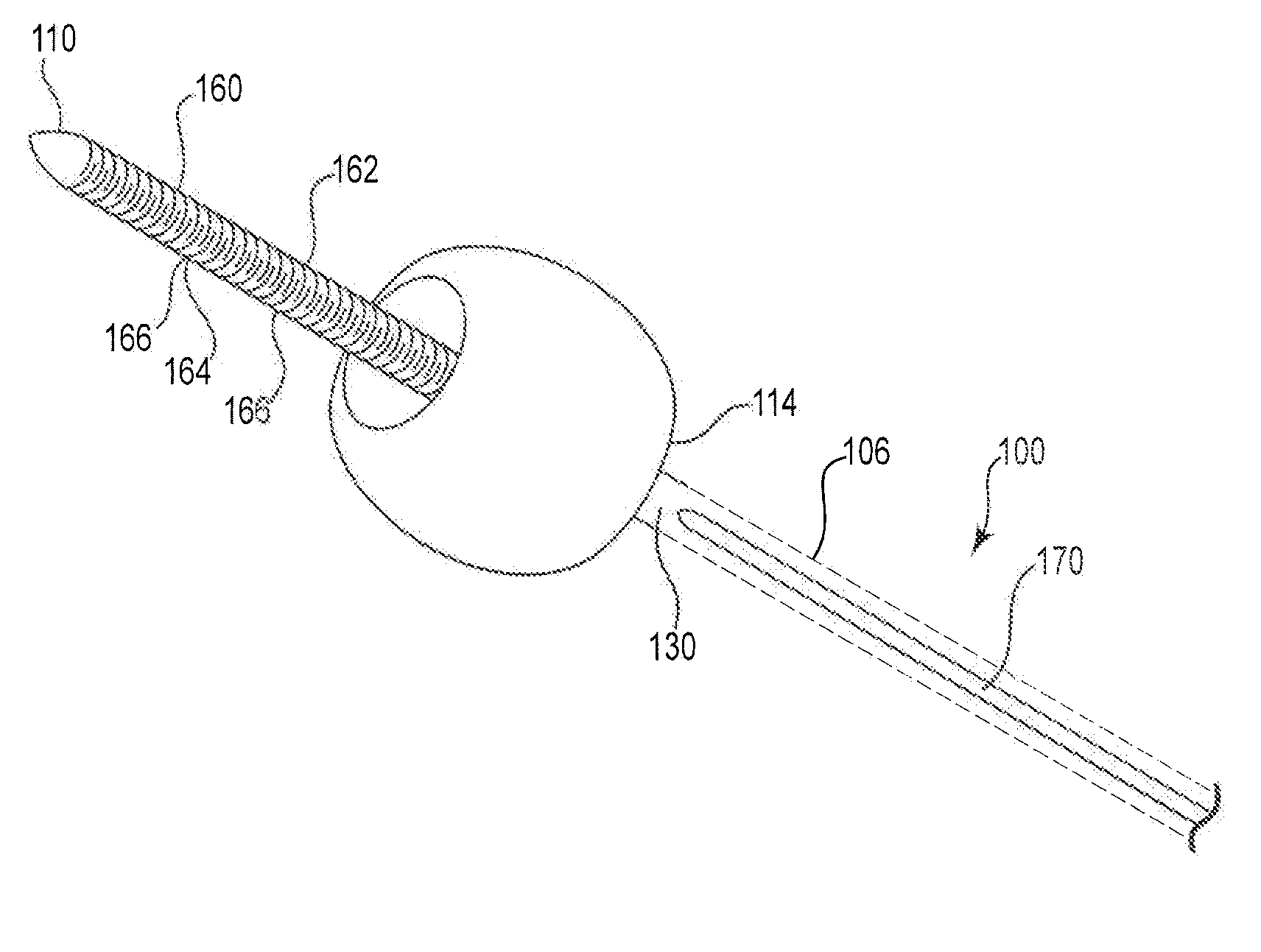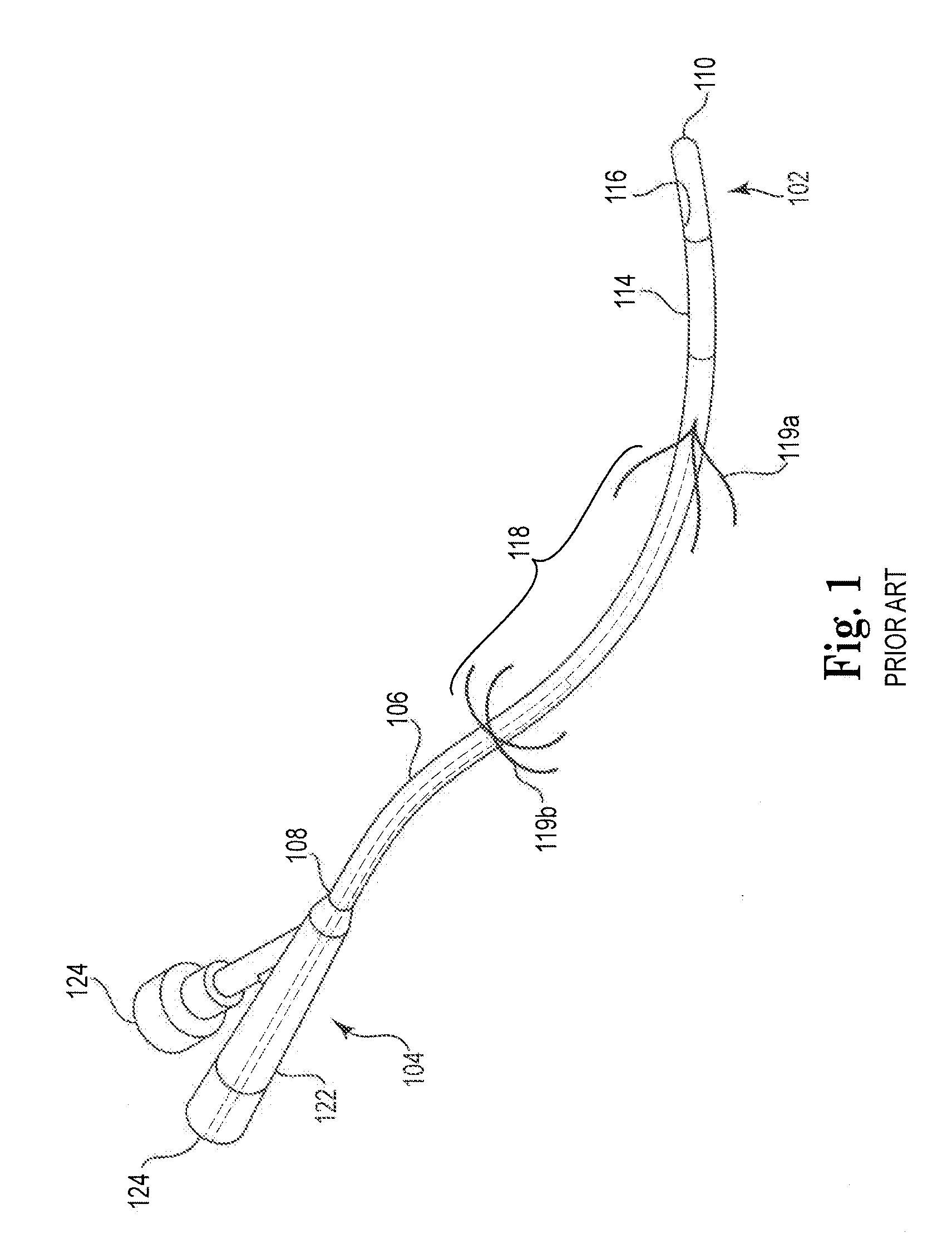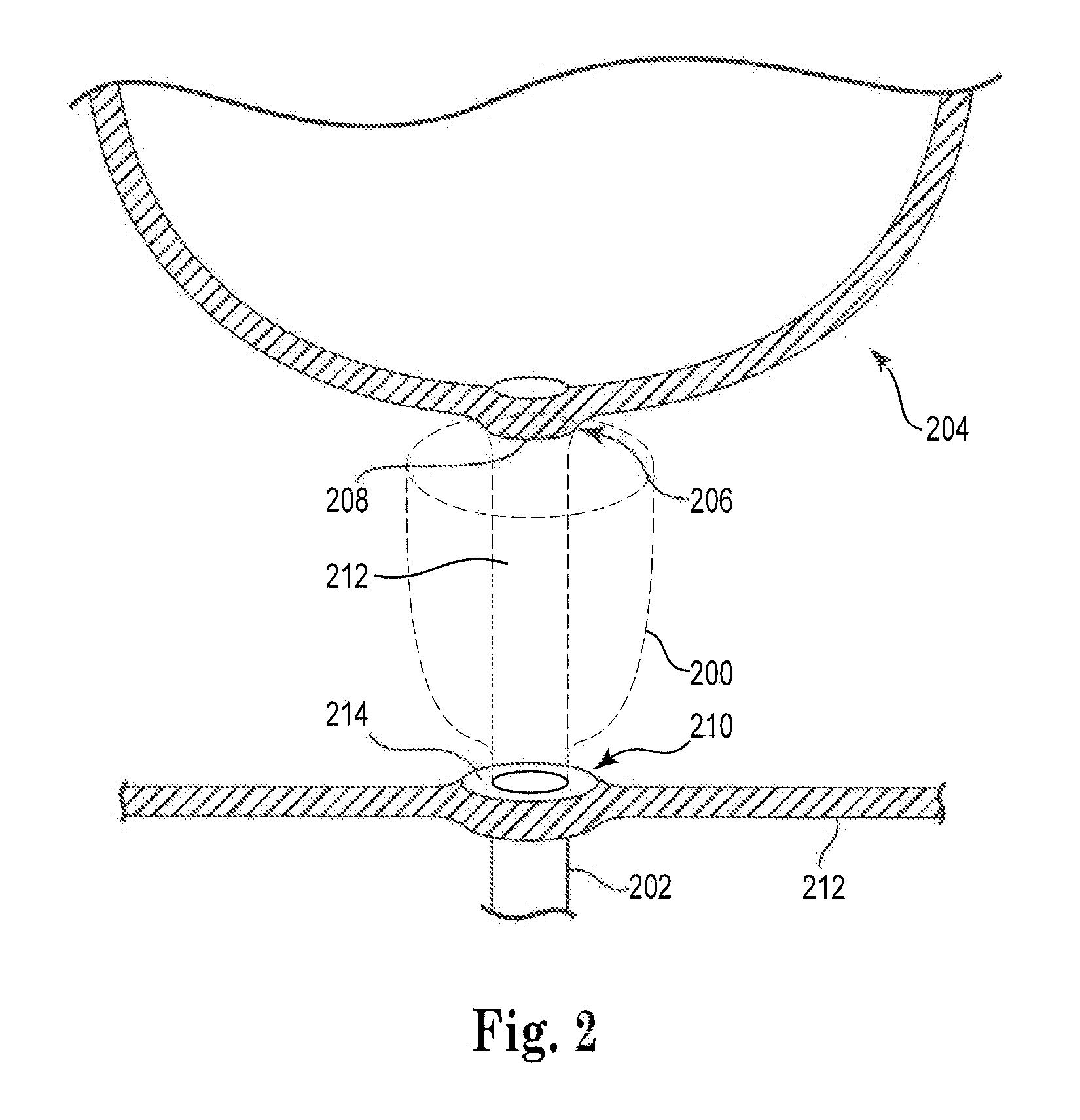Anastomosis device and related methods
a technology of anastomosis and catheter tip, which is applied in the field of urinary catheters, can solve the problems of difficult suture installation, incontinence or impotence, and sensitive technique, and achieve the effects of improving the fluid flow through the catheter tip, preventing the formation of blood clots, and improving the flow of urin
- Summary
- Abstract
- Description
- Claims
- Application Information
AI Technical Summary
Benefits of technology
Problems solved by technology
Method used
Image
Examples
Embodiment Construction
[0024]Referring generally to FIGS. 1-3, an anastomosis device useful according to the invention can be any anastomosis device adapted to perform one or more of the methods described herein, e.g., an anastomosis method associated with a radical prostatectomy. An example of a useful design, generally, is the type sometimes referred to as a Foley catheter that has been constructed to include modified features as also presented in the present description including tissue approximating structure, ports, fluid conduits, and the like.
[0025]An anastomosis device of the invention can include a hollow, elongate, flexible catheter body having a proximal end and a distal end. An inflatable balloon can be located near the distal end, and an inflation lumen for inflating the balloon can extend to the balloon along the catheter body, e.g., along a portion or all of the catheter body from the proximal end to the balloon. During use, the balloon can rest against the neck of the bladder to prevent ur...
PUM
 Login to View More
Login to View More Abstract
Description
Claims
Application Information
 Login to View More
Login to View More - R&D
- Intellectual Property
- Life Sciences
- Materials
- Tech Scout
- Unparalleled Data Quality
- Higher Quality Content
- 60% Fewer Hallucinations
Browse by: Latest US Patents, China's latest patents, Technical Efficacy Thesaurus, Application Domain, Technology Topic, Popular Technical Reports.
© 2025 PatSnap. All rights reserved.Legal|Privacy policy|Modern Slavery Act Transparency Statement|Sitemap|About US| Contact US: help@patsnap.com



